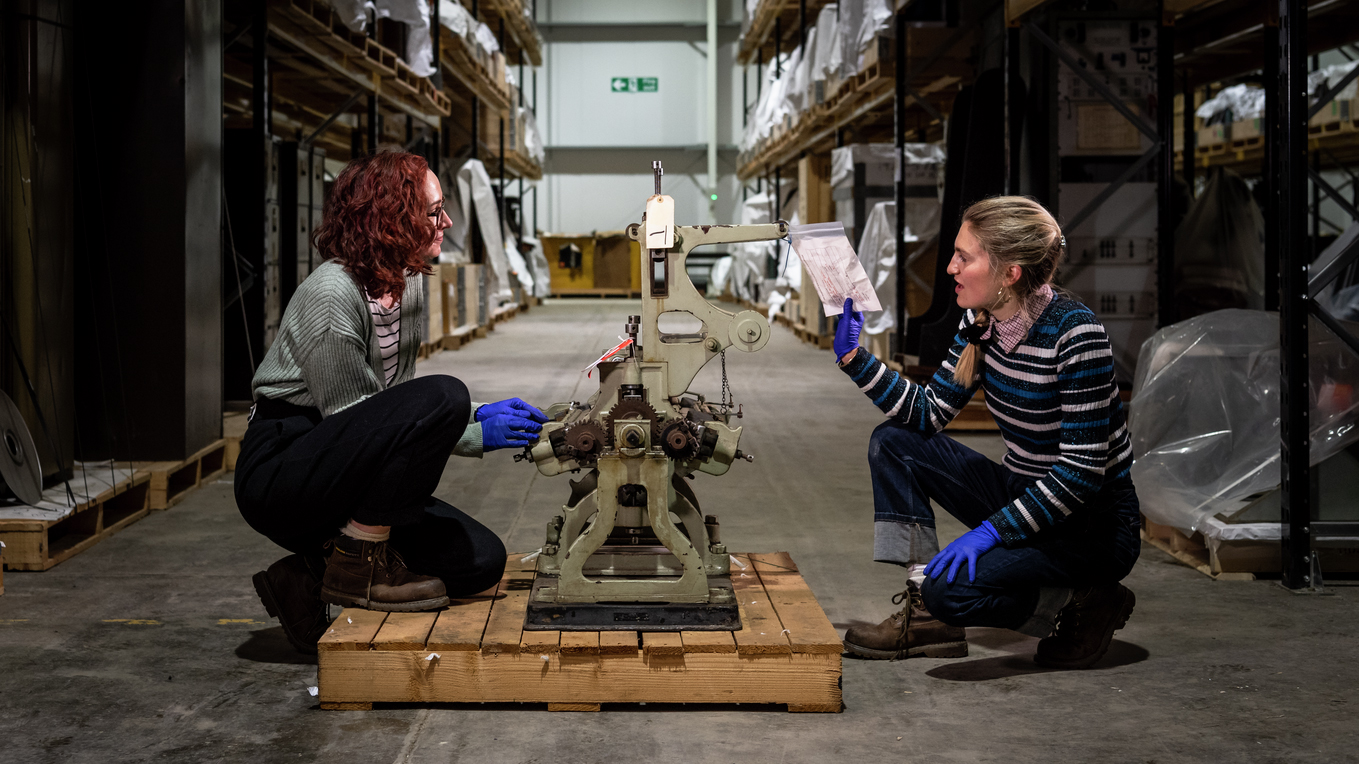Media coverage of missing objects ‘misleading’, says MA director

Recent coverage of objects missing from museum collections is "misleading and damaging", the director of the Museums Association (MA) has said.
Collections management has been under scrutiny following the announcement in August of alleged thefts from the British Museum.
Since then, Freedom of Information requests by the media have revealed that thousands of objects are unaccounted for in a number of UK museums.
A report by BBC News this week showed that 1,921 objects are missing from the collections of Amgueddfa Cymru - Museum Wales. These include Roman tiles and coins, a bronze age sword, axe and javelin head, royal medals, and crockery.
Amgueddfa Cymru told the BBC that a significant number of the items were duplicates of which there were better examples within the collection, and that it expected most of the items to be recovered as it worked through the collection.
Other news outlets have reported that 560 items have been mislaid, destroyed or stolen from the collections of Imperial War Museums (IWM), including drawings from the Illustrated London News, miniature replica weapons and wartime posters. In total IWM cares for more than 155,000 three dimensional objects, 11 million photographs and 20,000 papers.
Meanwhile 540 items are unaccounted for in the collections of the Natural History Museum, including parts of a dinosaur fossil and microscopic slides. The museum holds the largest natural history collection in the world, with around 80 million objects.
Museum leaders have warned that the coverage is misleading, saying that missing items in collections numbering millions of objects is not unexpected, and that the movement of objects is a normal part of museum work.
MA director Sharon Heal said: "These stories are misleading and damaging to the reputation of museums. It is unsurprising that, with collections amounting to tens of millions of items that have been collected over many decades, some items might be missing or unaccounted for.
"As we said in our statement following the disclosure of theft from the British Museum, theft from collections by people who work in museums is, fortunately, incredibly rare."
Heal added that collections documentation has been hampered by years of systemic cuts to museum budgets.
"Museums have been working hard to document and digitise their collections over many years but unfortunately the systemic underfunding of the sector over the past 10 years in particular has undermined their ability to do this," she said.
"Funding cuts, restructures and redundancies have led to a loss of expertise and a weakening of the normal systems of checks and balances, as well as slowing down digitisation and documentation programmes, and collections research."
Heal added: "Movement of objects into and out of museums, whether through loans, outreach, acquisitions or disposals, is a normal part of what museums do.
"The Museums Association recently published Off the Shelf, a toolkit to support the ethical transfer, reuse and disposal of collections, which will support museum workers to think more proactively and dynamically about collections and to make decisions with communities about the best use of our rich and diverse collections.
"Looking to the future we would like to see investment in museums – in the people who work in them and in collections and buildings – so that we can continue to safeguard and share collections with communities across the UK."
Comments (1)
Leave a comment
You must be signed in to post a comment.

I agree it is very missleading to be given information on recent discoveries of items being missing, as if they had all recently dissappeared. In risk analysis we count the number of items missing per item years of experience to get to an overall rate of apparent loss of items (misplaced, miscatalogued, stolen, etc.). as a simple example, if a museum started collecting 100 years ago and added 1000 items every year, it would now have 100,000 items but their collection would have accrued 5,000,000 item years of experience. So if that collection was found unable to locate 100 items, the appropriate failure rate is not 100/100,000 items but 100/5,000,000 item years of experience. Further, item tracking in museums has improved greatly in recent decades so that the current risk is almost certain to be lower than past experience would indicate. At least, that is a reasonable expectation if support for collection care has not eroded greatly in recent years. A problem is that senior administration and governance is fooled by the ubiquitous zero risk bias we all have as humans into feeling that the very low risk to our museum colletions is actually zero risk. In truth, collection suffer loss of items and loss of value throughout items due to a combination of continual deterioration (like oxidation), sporadic incidents (like dropping an item), and rare events (like major fires). If we learn to recognize that damage and losses are ongoing then we can adopt a risk management approach to their care and not be shocked when problems are discovered. See, for example the blog: https://protectheritage.com/shocking-museum-damages/